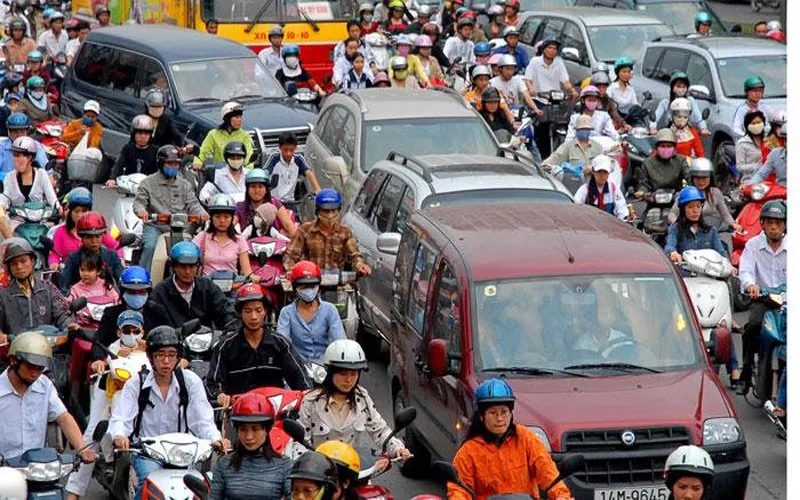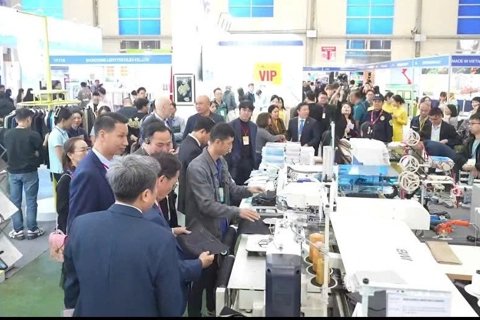Hanoi asked to ban motorbike after 2030
Hanoi is advised to provide a solution to convince people to switch to public transport rather than just considering a motorbike ban.
The Vietnamese Government has asked Hanoi and four other major cities, including Ho Chi Minh City, Haiphong, Danang, and Cantho to plan a motorbike ban after 2030 to reduce traffic congestion and emissions.
The request was made in a government resolution issued on April 6 on ensuring traffic safety and preventing traffic congestion in the 2022-2025 period.
For Hanoi, the ban will apply to 12 downtown districts and on three major roads: Truong Sa, Hoang Sa and National Highway 5, according to a plan being prepared by the municipal authorities. After 2030, the ban will expand to all the city's 30 districts (including 18 outskirt ones) and the motorbikes from other provinces.
Currently, Hanoi has nearly 5.8 million motorbikes and 600,000 automobiles but there are only 140 bus lines, meeting an estimated 31% of total demand.
Director of Hanoi Department of Transport Vu Van Vien told The Hanoi Times that the capital city is considering whether it is public transport infrastructure could hold up to the challenges the next time.
Numerous motorbikes cause serious traffic congestion in Hanoi so the municipal authorities plan to restrict the use of motorbikes in metropolitan areas and eventually ban them altogether. Photo: Thanh Hai |
The recently opened Cat Linh-Ha Dong urban railway service, along with the under-construction Nhon-Hanoi Railway Station line, would be able to carry only about 5-7% of the city’s passengers, while Hanoi’s mass transit network has not been able to satisfy mobility demand in the eastern and northern areas, Vien pointed out.
He recommended curbing personal vehicles and only banning them on routes where public transport is available. “The city should speed up its urban railway projects and encourage people to use them,” Vien said.
“In the next seven or eight years, the city should have two or three more metro lines before banning motorbikes. Restricting two-wheelers while public transport is still inadequate could lead to the rise in-car use,” he warned.
The director cited the example of Myanmar's Yangon City where the motorbike ban caused the number of personal cars to skyrocket, worsening traffic jams in the city.
“Hanoi should provide a solution to convince people to switch to public transport rather than just considering a motorbike ban. The city should diversify its public transport vehicles, encourage people to walk and cycle by providing bike lanes and ensure sidewalks are clear of obstacles so that walking becomes a convenient option,” Vien noted.
Together with Hanoi, the above-mentioned four cities of the first level of administrative division must either ban or restrict motorbikes in certain districts after 2030, as well as develop a scheme to collect congestion charges in some areas prone to traffic jams and environmental pollution.
Poor public transportation development has driven up the use of personal vehicles in Vietnam as a whole and in its major cities, in particular.
The cities’ specialized agencies must work with municipal legislative bodies to devise policies on prioritizing mass transportation to achieve the target of having public transport cover 30-35% of passenger volume.
The resolution requires that the five cities focus their resources on dealing with congestion black spots so that traffic jams would not exceed 30 minutes.
The Transport Development and Strategy Institute under the Ministry of Transport said that due to differences in the capabilities of the public transit system in various cities, the ministry will initially restrict bikes in selected areas and move towards an outright motorbike ban in the five major cities by 2030.
Putting a limit on the number of motorcycles is aimed at easing traffic congestion, saving travel times and costs for residents, and minimizing environmental pollution. The move is expected to reduce traffic accidents, contribute to the cities’ sustainable development and improve residents’ quality of life.










